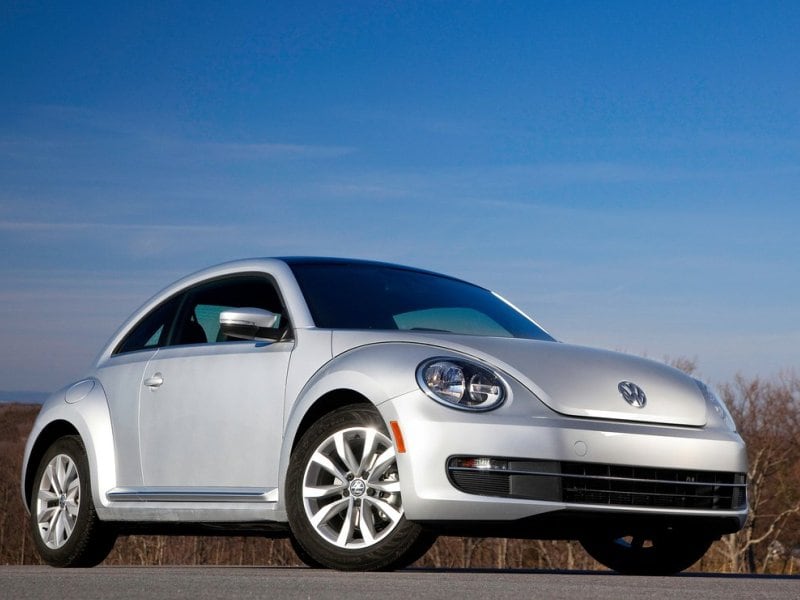Recent Articles
Popular Makes
Body Types
2015 Volkswagen Beetle TDI: Road Test Review
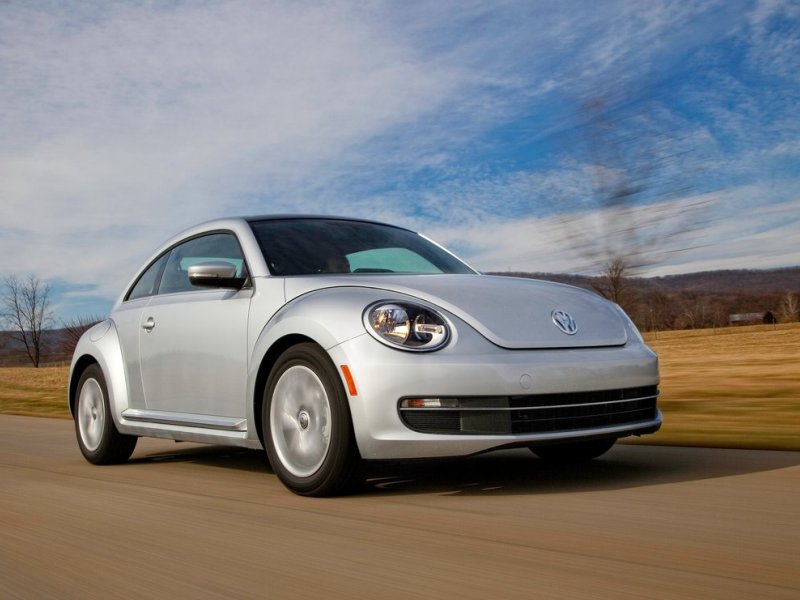
There are two great things about the 2015 Volkswagen Beetle TDI. One: it’s an emotional purchase. No one buys a Beetle because they have loads of kids and/or cargo to ferry around. They get a Beetle because they like the styling and the overall statement.
Two: the TDI aspect makes it a rational purchase. At the time of writing this article, diesel is about 40 cents a gallon cheaper than 87-octane gasoline. And it provides more miles per tankful, so it makes fiscal sense. The Beetle TDI can therefore satisfy both sides of our brains. And it even throws in a nice helping of torque. Now let’s take a closer look.
Models and Pricing
This two-door four-seater is available as a coupe or a convertible. When the Beetle comes as a TDI, it has essentially one fairly well stocked trim level. This includes 17-inch alloy wheels, push-button start, trip computer, leather-wrapped stepping wheel, rearview camera, and Bluetooth. The coupe starts at $25,615 and employs a six-speed manual transmission. There’s a sunroof/sound/navigation package that pushes the price to $28,530.
Naturally, there’s no sunroof option for the convertible, which starts at $30,495 and comes with the same equipment as the coupe. Again, the sound/navigation package raises the stakes, this time to $31,945, while also adding blind spot monitoring, rear traffic alert and an upgraded Fender-branded audio system.
All prices include $820 destination charges. To opt for the six-speed DSG (dual-clutch, semi-automatic) transmission in any of the above — probably the most popular choice — factor in another $1,100.
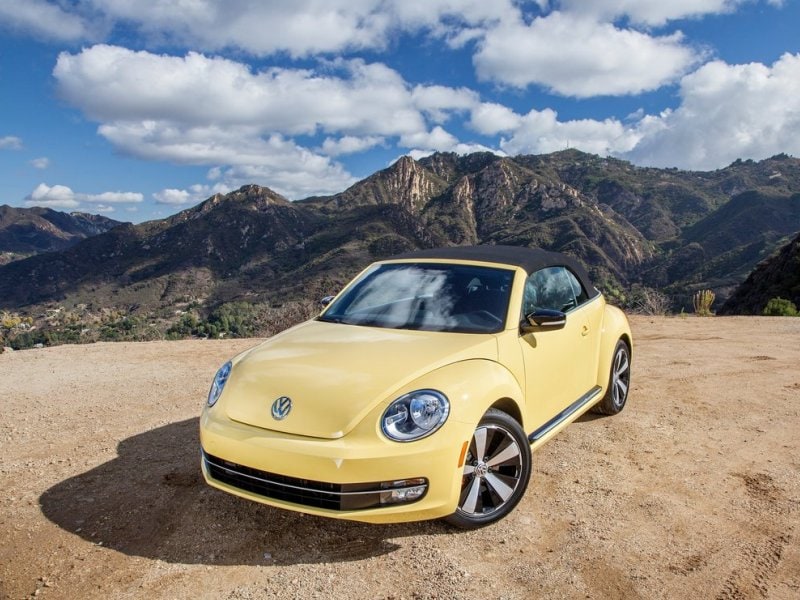
Design
This is what the Beetle is all about. Sorry to use the R-word, but there really is a retro flavor, even though this current generation is lower, wider and a little more masculine compared with its predecessor. And although its engine is now in the front, this model still manages to evoke the old, original VW people’s car (known officially as Type 1). With the fabric roof up, the convertible’s lines retain the general shape, but it also brings the chance to add a contrasting color.
The cabin manages to blend character and function. The dash is color-coded yet also houses classy switchgear. The TDI model even gets an extra little instrument cluster on top of the center console to house things like the turbo boost gauge and oil temperature. For those who prefer the tin top but still like an airy cabin, the sunroof is of the panoramic variety.
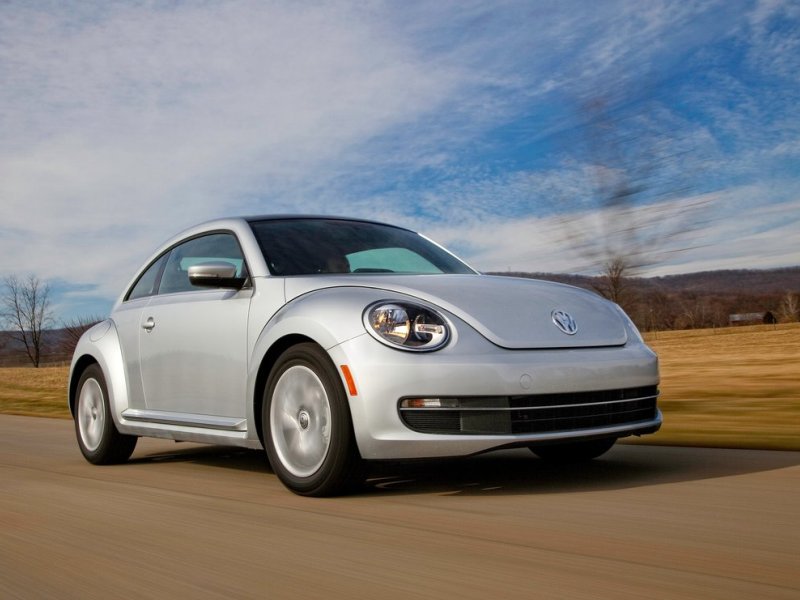
Comfort and Cargo
The Beetle is based on the same platform as the Volkswagen Jetta, which means a ride that veers more toward comfort but never gets too sloppy. The front seats are typically German: they might seem a little firm at first, but prove to be comfortable and supportive — a blessing during longer drives.
The low roof line might lead some people to assume passenger space is limited, but the Beetle is an example of ingenious packaging. There’s plenty of space up front, but rear passenger space is always going to be scarce given the car’s compact classification.
Trunk space in the coupe is a useful 15.4 cubic feet with the rear seats in place. Fold them down and there’s a total of 29.9 cubic feet to play with. The convertible’s roof has to go somewhere, so that version only enjoys 7.1 cubic feet of cargo volume. The less-than-ideal shape of the convertible’s trunk aperture might be a downside for some, along with the limited rear visibility when the roof is folded down. And having the windbreak in place puts the two rear seats out of commission.
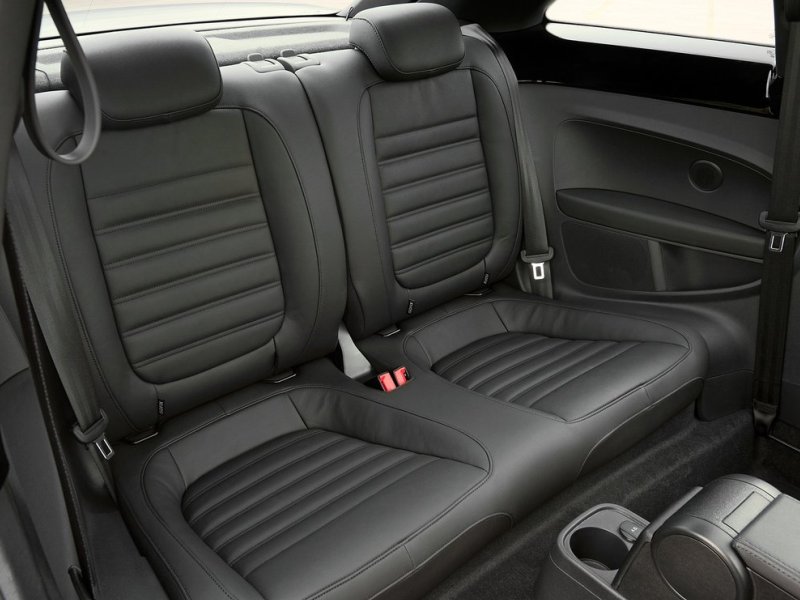
Features and Controls
Since the American car buyer tends to prefer automatic transmissions, let’s assume we’re dealing with a DSG-equipped Beetle. Don’t be put off by the “dual-clutch" description. There are still only two pedals for the driver to concentrate on: throttle and brake.
Think of it as a mechanized manual. The driver can put the lever into D for drive (just like a regular automatic) and be happy. Or for extra involvement, there are paddle shifters behind the steering wheel to click through the gears. It’s fun, foolproof and an evolution from the standard stick shift. Not that there’s anything intrinsically wrong with the manual transmission.
The convertible’s power-operated roof does its “hello sun, goodbye rain” routine in 10 seconds, while traveling at speeds of up to 31 mph.
Volkswagen is the only auto maker to offer a Fender-brand audio system upgrade. Fender is well known for making electric guitars and amplifiers; the system in VW cars is actually made by Panasonic. It works fine, just don’t expect the speakers to accentuate stellar guitar sounds unless they were recorded like that in the first place.
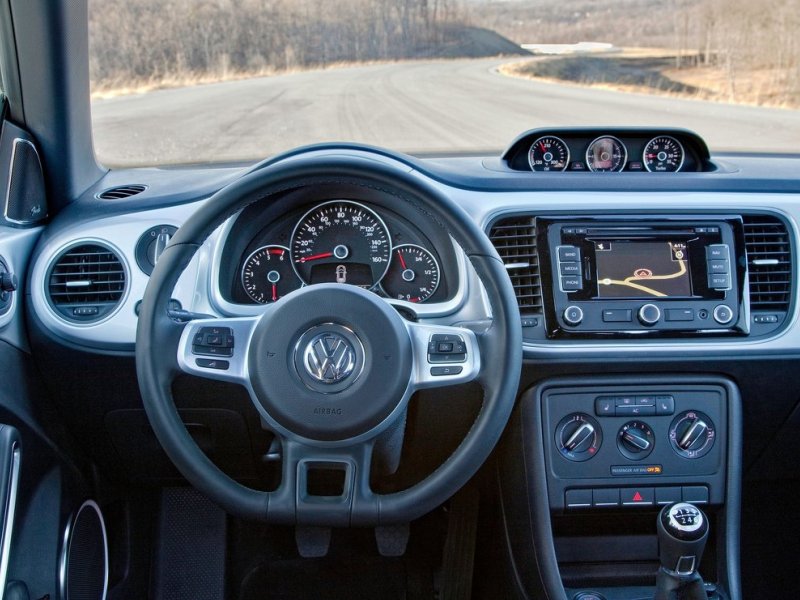
Safety
As well as the rearview camera that comes as standard, the Beetle also has front and side airbags, daytime running lights, brake assist, and electronic stability control, plus the mandatory ABS (discs at each corner) and traction control.
Convertible Beetle buyers especially would be wise to spring for the optional blind spot monitoring and rear cross-traffic alert system. Visibility is not great and even if these extra safety features prevent hitting someone while reversing out of a parking spot, then it’s pretty much paid for itself. And being more aware of fast-moving freeway traffic just behind one’s shoulder has even greater worth.
The National Highway Traffic Safety Administration (NHTSA) and Insurance Institute for Highway Safety (IIHS) both consider the coupe to have scored well in crash tests. Neither agency has tested the convertible, but it’s surely just as crashworthy.
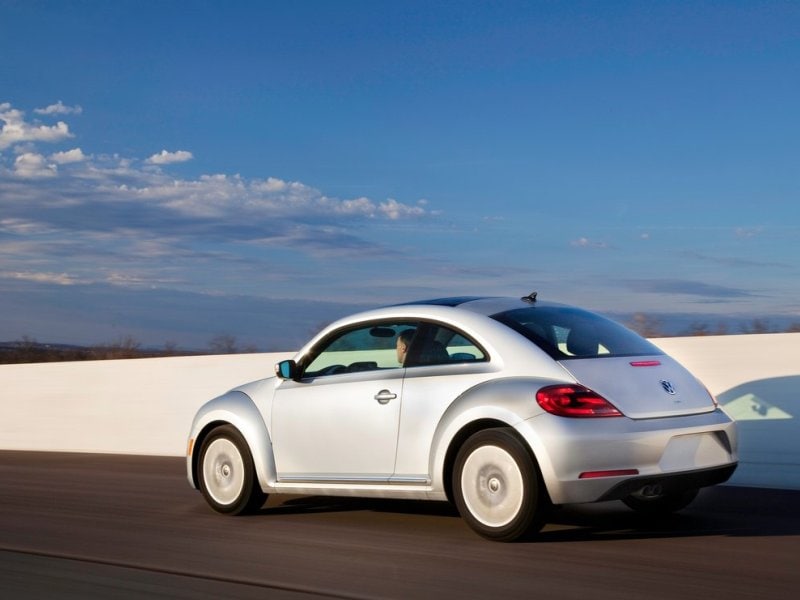
Engines and Fuel Economy
The Beetle TDI gets a new engine for 2015. It’s now a 2.0-liter four-cylinder turbocharged unit that makes 150 hp. Although that’s 10 hp more than the previous engine, 150 is not really a big number in modern motoring. But turbo diesel engines make up for it with torque.
Torque is how quickly the car gets quick, what some would call “pick-up.” It’s that surge of acceleration when the throttle is pressed. In this case, the Beetle TDI enjoys 236 lb-ft, which is definitely a fun amount of muscle. Certainly enough for overtaking maneuvers and making short work of steep hills.
The other side of this diesel-minted coin is remarkable fuel economy. The EPA rates the coupe at 31 mpg city, 41 mpg highway and 34 mpg combined. The slightly less aerodynamic shape of the convertible makes it thirstier by one mile per gallon, but it still has a combined figure of 34 mpg. Those figures are the same for both manual and DSG versions.

Performance
Let’s upturn convention and start this performance category by talking more about fuel economy. Yes, we just ran a whole section with the EPA numbers, but they don’t tell the full story.
An average of 34 mpg is possibly the least you can hope to achieve unless your right foot is chronically leaden. One function of the trip computer is to read out instantaneous consumption. Keep an occasional eye on that and it won’t take much to push the average figure into the 50s.
Volkswagen doesn’t publish zero-to-60 mph times and the fraction under 10 seconds it would probably need isn’t too exciting. But where the engine shines is when things are already up and running, say around 2000 rpm, once the turbo is spinning and there’s some momentum to exploit.
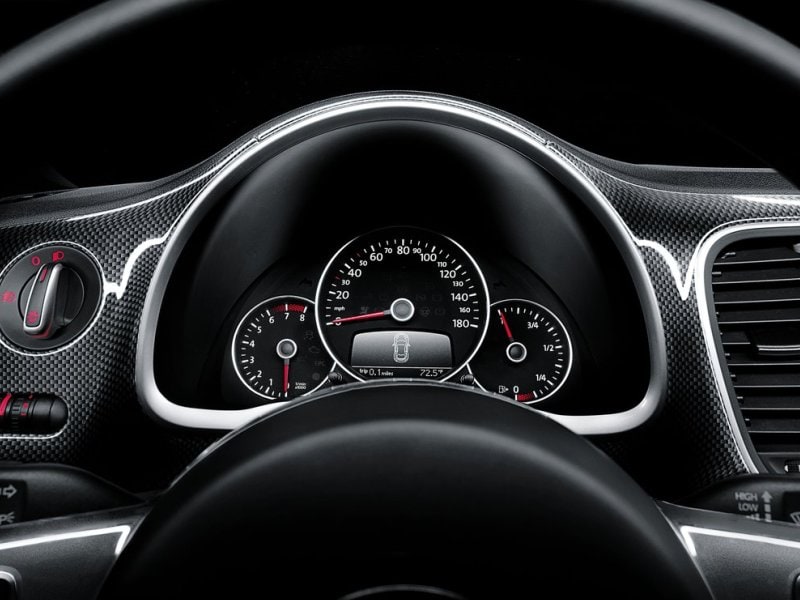
Final Thoughts
The 2015 Volkswagen Beetle TDI is not for everyone. It doesn’t even try. But for someone who is free of spirit (and probably family commitment), it’s well worth considering. The diesel engine puts it in an even smaller niche than the gasoline-powered Beetle, but nothing else on the road makes a virtue of mixing fuel-sipping and attention-grabbing with quite the same panache.
Like GM has OnStar, VW has Car-Net. It’s a tech package that allows users to check the condition of the car and send commands via smartphone. It sends an alert if an airbag has gone off and even allows a parent to pre-set boundaries (called geo-fencing) for their teenage drivers.
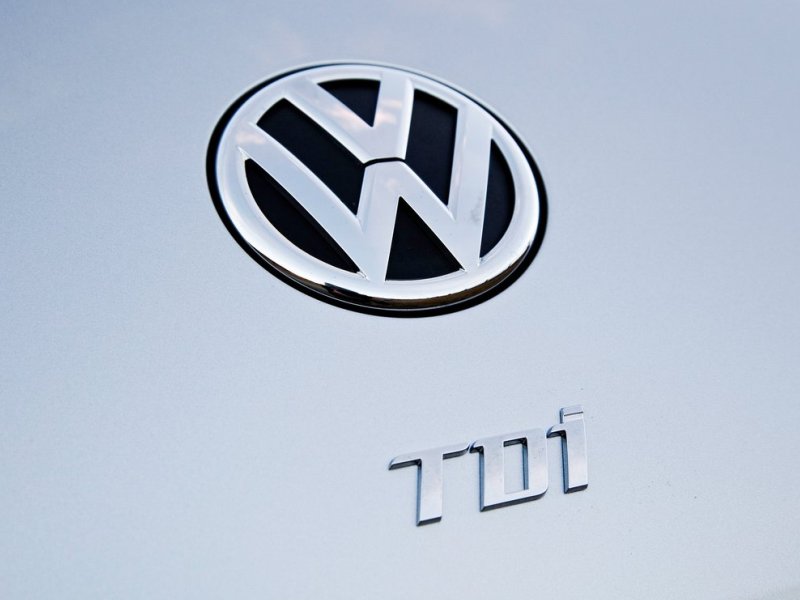
Pros and Cons
Individual styling, but not weird. Choice of roof: metal or fabric brings markedly different driving experiences. It somehow keeps the old car’s legacy alive, and sorry to use the i-word, but that car really has become an icon. Great performance to fuel economy ratio. DSG transmission: as easy as an automatic, as engaging as a manual. This is completely subjective, but a brown convertible with a light tan fabric roof totally works.
A bit pricey for what it is. Not enough options. For instance, adaptive lighting would have been nice. The Jetta offers it. And with rivals like the Mini offering so many ways of personalizing one’s wheels, it seems VW has missed a trick by not doing something at least similar.
